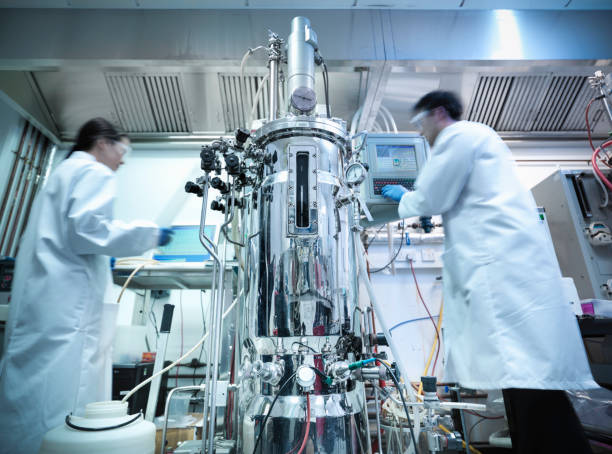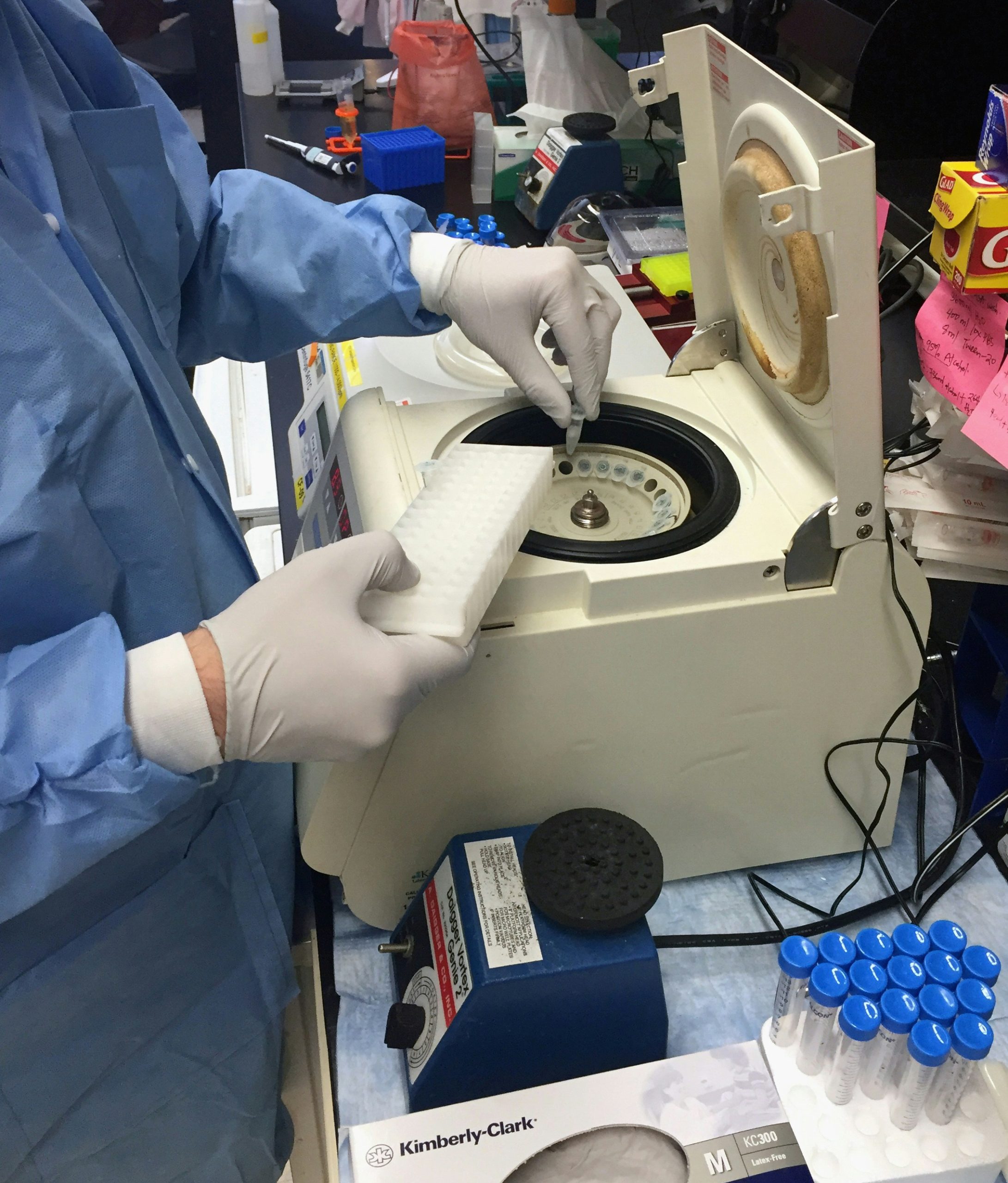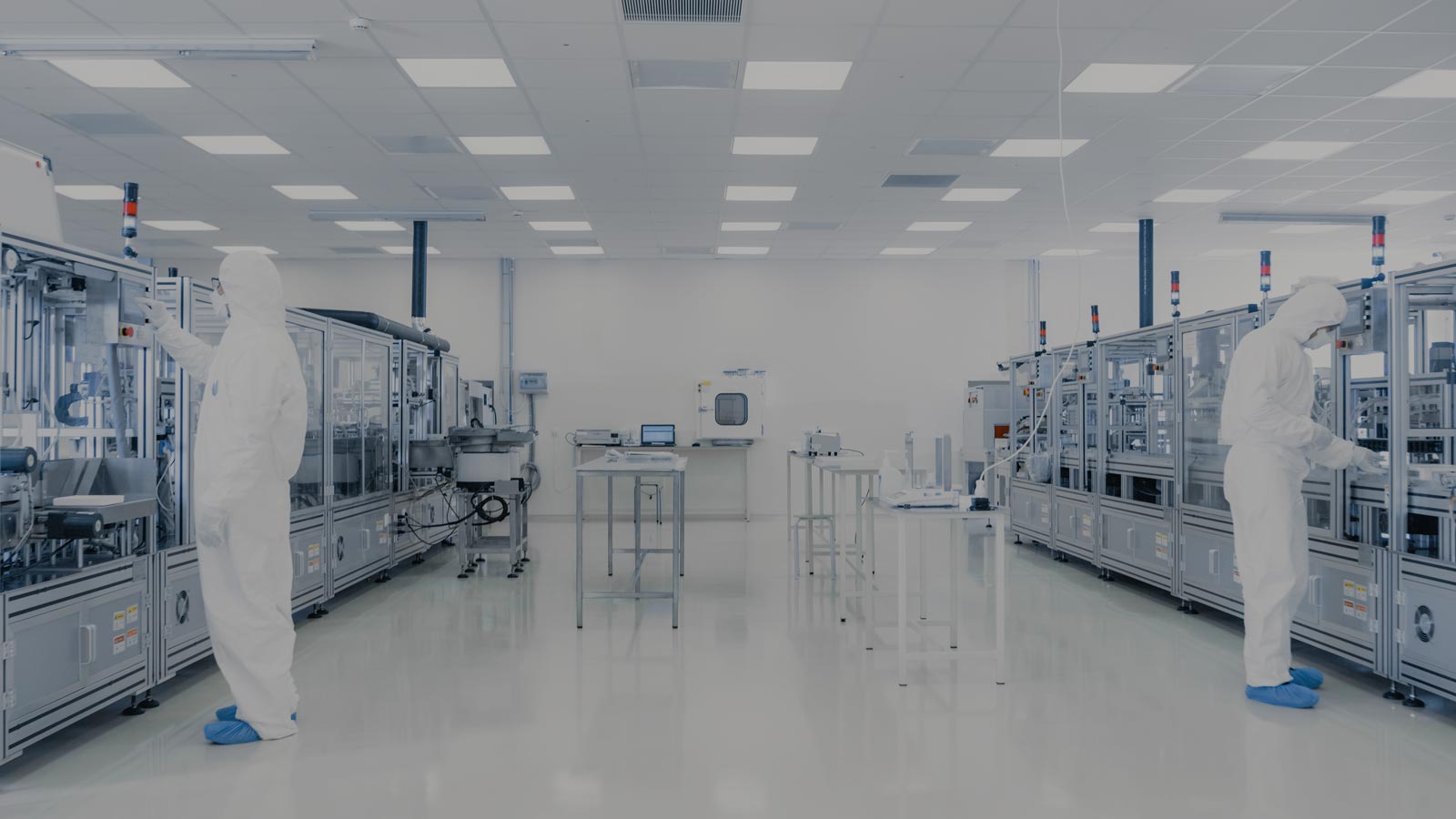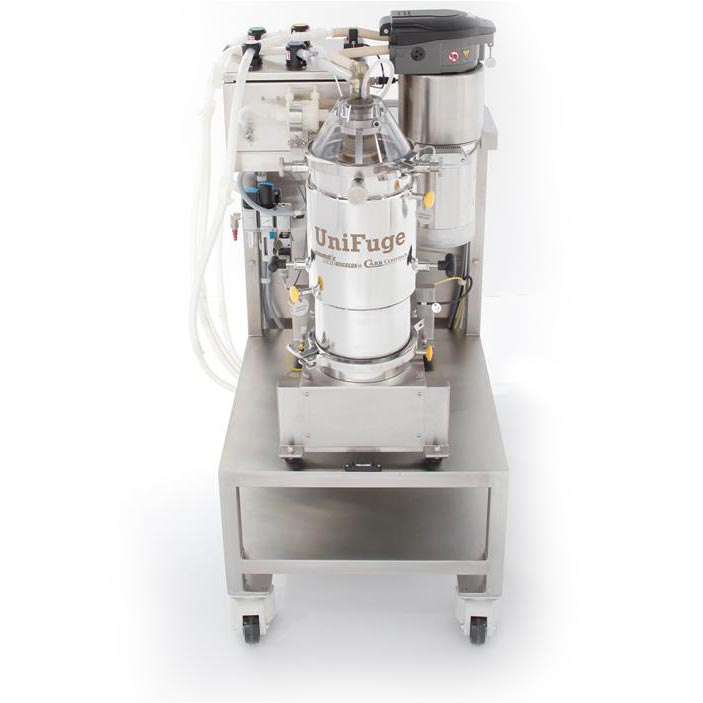
Bioreactors are at the heart of many bioprocessing and pharmaceutical applications, providing controlled environments for cultivating cells, microorganisms, and biologics. Recent innovations in bioreactor design have transformed these systems, improving efficiency, scalability, and functionality. Here’s an overview of the most impactful advancements, and how they can enhance your processes.
Modern bioreactors integrate several state-of-the-art features, including:
These technologies make it easier to optimise bioprocesses, ensuring maximum yield and efficiency. Fluid Biosolutions offers a range of advanced bioreactor systems that support varied applications, ensuring businesses can meet production goals effectively.
One of the most impactful innovations in recent years is the adoption of single-use bioreactors, which offer:
These single-use systems are perfect for flexibility and scalability, especially in environments where speed and safety are critical.
Achieving high yields requires optimising key elements of bioreactor systems, such as:
At Fluid Biosolutions, our bioreactors are designed to deliver superior performance, ensuring consistent product quality across every batch.
Silicone tubing is an essential component in bioreactors, facilitating the sterile transfer of fluids and gases. Key benefits of silicone tubing include:
Fluid Biosolutions provides high-purity silicone tubing that meets the stringent demands of the bioprocessing industry, ensuring your bioreactor systems remain efficient and safe.
After cultivation, many processes rely on centrifuge machines for separating biological materials. Centrifuges help:
At Fluid Biosolutions, we offer reliable, high-performance centrifuge machines designed to complement bioreactor systems.
The integration of automation into bioreactors has revolutionised control and monitoring. Key benefits include:
Automation helps improve scalability and efficiency, ensuring that businesses can meet the growing demands of the biotech and pharmaceutical sectors.
As environmental sustainability becomes a priority, innovations in bioreactor design are also focusing on:
This trend towards sustainability not only benefits the environment but also reduces operational costs for businesses.
Innovations in bioreactor design are enabling biotech and pharmaceutical companies to produce better-quality products more efficiently. From single-use bioreactors to advanced automation, the latest trends in bioreactor technology offer tremendous potential for improving production processes. Combined with high-purity silicone tubing and centrifuge machines, these innovations help businesses achieve the highest levels of productivity and safety.
At Fluid Biosolutions, we’re dedicated to providing state-of-the-art bioreactor systems that meet the demands of modern biotechnology. Contact us today to optimise your bioprocessing systems.
Silicone tubing is a vital component in many industries, especially in the bioprocessing sector, where its flexibility, durability, and biocompatibility make it the material of choice. In applications such as biosolutions, centrifuges, and bioreactors, high-quality silicone tubing ensures smooth operations and maintains stringent safety standards. Whether you’re looking to optimise your processes or understand the benefits of silicone tubing, this guide will cover everything you need to know about how it can enhance your operations.
Silicone tubing is made from a synthetic polymer with remarkable properties that suit various demanding applications. It stands out due to its thermal stability, flexibility, and non-reactivity, making it ideal for industries such as pharmaceuticals, food and beverage, and especially bioprocessing.
The bioprocessing sector, particularly in applications involving bioreactors and centrifuges, relies heavily on the smooth and sterile flow of fluids. This is where silicone tubing becomes essential, ensuring that bioprocesses remain contaminant-free while being resistant to heat, pressure, and chemicals. Additionally, the high purity of silicone tubing, such as the products available from Fluid Biosolutions, ensures that it complies with the most stringent industry standards.
In the world of biosolutions, where the integrity of biological substances must be preserved, silicone tubing plays a critical role. Whether you’re working with sensitive cell cultures or chemical compounds, the risk of contamination is significantly reduced when using high-purity tubing. Silicone tubing ensures a safe and sterile pathway, maintaining the quality of your processes.
At Fluid Biosolutions, our silicone tubing solutions offer unmatched performance for biosolution applications. For professionals working with bioreactors, silicone tubing allows the transport of fluids in a sterile and reliable manner, supporting the biomanufacturing processes from start to finish.
Centrifuges are essential equipment in bioprocessing, used for separating different substances at high speeds. In these demanding conditions, tubing needs to withstand considerable forces while maintaining a steady flow of fluids. Silicone tubing’s elasticity and tear resistance make it the preferred choice for such high-speed environments.
Another advantage of silicone tubing in centrifuge operations is its ability to handle fluctuations in temperature and pressure without compromising fluid integrity. This reliability makes it ideal for industries where process control is critical. For more information about the specific products we offer, explore our high-purity tubing options.
Bioreactors are controlled environments designed to cultivate cells, tissues, or microorganisms. These systems require the sterile transfer of gases and liquids, which is why silicone tubing is a key component in ensuring that these transfers occur smoothly and without contamination.
Due to its biocompatibility and resistance to harsh cleaning processes, silicone tubing is the go-to solution for bioreactor systems. Its ability to endure frequent sterilisation and cleaning cycles without degradation makes it the optimal choice for supporting sensitive biological processes. If you’re after bioreactor solutions or parts, our range of products is sure to have what you’re looking for. Find out more about this product here.
Not all silicone tubing is created equal. High-purity silicone tubing, like the solutions available at Fluid Biosolutions, meets the stringent requirements of the pharmaceutical and bioprocessing industries.
If you’re interested in upgrading your current tubing to meet higher standards, explore our range of high-purity silicone tubing.
Selecting the appropriate silicone tubing for your processes can be challenging, given the variety of options available. Factors to consider include:
Whether you’re working with bioreactors, centrifuges, or general biosolutions, it’s essential to choose tubing that aligns with your specific process requirements.
Our team at Fluid Biosolutions can help you select the right tubing for your applications, ensuring seamless integration with your current systems. For more information on our products and to speak to an expert, visit our contact page.
Silicone tubing is a critical component in the success of many bioprocessing applications. From biosolutions to bioreactors and centrifuges, high-quality silicone tubing ensures operational efficiency and safety. At Fluid Biosolutions, we offer a comprehensive range of high-purity silicone tubing designed to meet your specific industry needs.
If you’re ready to enhance your bioprocessing systems, get in touch with our team today or explore our range of high-purity tubing products.

Efficiency is a critical factor in both laboratory and industrial settings, impacting productivity, accuracy, and overall operational costs. One technology that significantly contributes to enhancing efficiency is the centrifuge. This article explores how advanced centrifuge technology can maximise efficiency in various applications, highlighting its benefits, key features, and the advantages it brings to different industries.
Advanced centrifuge technology finds applications across a wide range of industries, each benefiting from its efficiency and precision.
Selecting the appropriate centrifuge for your specific needs involves considering several key factors to ensure optimal performance and efficiency.
The field of centrifuge technology continues to evolve, with innovations aimed at further enhancing efficiency, precision, and user convenience.
In summary, advanced centrifuge technology plays a pivotal role in maximising efficiency across various industries. Its benefits, including increased productivity, enhanced accuracy, and reduced operational costs, make it an invaluable asset. Investing in high-quality centrifuges with advanced features ensures that your processes are efficient, reliable, and future-proof.
For more information or to explore advanced centrifuge options, visit Fluid Biosolutions. Maximise your operational efficiency now with the latest in centrifuge technology.

Optimising bioprocesses is essential in today’s biotechnology and pharmaceutical industries. As the demand for efficient and scalable production methods increases, bioreactors play a pivotal role in meeting these needs. By providing a controlled environment for biological reactions, bioreactors enhance productivity, consistency, and product quality.
Bioreactors come in various types and configurations, each designed to cater to specific applications. Understanding the capabilities and advantages of these systems is key to leveraging their full potential. This article explores the fundamentals of bioreactors, their impact on bioprocess optimisation, and how they can benefit your operations.
Definition and Types of Bioreactors
● Definition: Bioreactors are vessels or systems that support biologically active environments. They are used for growing cells, tissues, or microorganisms under controlled conditions.
● Types:
○ Stirred Tank Bioreactors: Commonly used for microbial and cell cultures. They feature a mechanical agitator to mix the culture medium and maintain uniform conditions.
○ Air-lift Bioreactors: Utilise air bubbles to circulate the medium and provide oxygen. Ideal for shear-sensitive cells.
○ Packed Bed Bioreactors: Contain immobilised cells or enzymes on a support matrix. Suitable for continuous processes and high cell density cultures.
○ Wave Bioreactors: Use a rocking motion to mix the culture. Often used for small-scale and disposable applications.
● Early Beginnings: The concept of bioreactors dates back to the early 20th century when they were first used for fermentation processes. Early designs were simple and lacked precise control mechanisms.
● Technological Advancements:
○ Automation: Modern bioreactors feature advanced control systems for temperature, pH, dissolved oxygen, and nutrient levels. This automation ensures optimal conditions for cell growth and product formation.
○ Scalability: Bioreactors are now available in a wide range of sizes, from small laboratory units to large industrial-scale systems. This scalability allows for seamless transition from research to production.
○ Single-use Systems: Disposable bioreactors have gained popularity due to their reduced risk of contamination and lower cleaning requirements. They are particularly useful in biopharmaceutical manufacturing.
Bioreactors are at the heart of efficient bioprocessing. They provide an environment where biological reactions can be carefully controlled, ensuring optimal conditions for cell growth and product formation. By maintaining precise control over critical parameters, bioreactors enhance both the efficiency and consistency of bioprocesses.
● Enhancing Efficiency:
○ Controlled Environment: Bioreactors allow for the precise control of temperature, pH, oxygen levels, and nutrient supply. This ensures that cells or microorganisms are kept in the best possible conditions for growth and productivity.
○ Scalability: From lab-scale experiments to industrial-scale production, bioreactors can be scaled up without compromising the quality of the product. This seamless scalability is crucial for meeting increasing demand.
● Consistency in Production:
○ Reproducibility: By standardising the bioprocess environment, bioreactors ensure that each batch of product is consistent with the last. This is vital in industries where product consistency is key, such as pharmaceuticals and biotechnology.
○ Reduced Contamination Risk: Modern bioreactors are designed to minimise the risk of contamination, a critical factor in maintaining product quality and safety.
Optimising bioprocesses with bioreactors not only improves productivity but also enhances the overall quality of the end products, making them indispensable in various industrial applications.
Modern bioreactors are equipped with a range of features that make them highly efficient and versatile tools for bioprocessing. These features ensure that bioreactors can meet the demands of various applications, from small-scale research to large-scale production.
● Automated Control Systems:
○ Bioreactors now come with sophisticated control systems that automate the monitoring and adjustment of critical parameters such as temperature, pH, and oxygen levels. This automation reduces the need for manual intervention and ensures optimal conditions are maintained consistently.
● Scalability and Flexibility:
○ One of the significant advantages of modern bioreactors is their scalability. They can be easily scaled up from small laboratory models to large industrial systems, making them suitable for all stages of bioprocessing.
○ Flexibility in design allows bioreactors to be customised for specific applications, whether it’s growing delicate cell cultures or robust microbial strains.
● Monitoring and Data Analysis:
○ Advanced bioreactors are equipped with sensors and software that provide real-time monitoring of the bioprocess. This data is crucial for understanding process dynamics and making necessary adjustments to improve efficiency.
○ Data analysis tools help in optimising processes by identifying trends and patterns, leading to more informed decision-making.
The integration of these key features in modern bioreactors ensures they are highly effective in optimising bioprocesses. They provide the necessary tools and capabilities to meet the diverse needs of biotechnological and pharmaceutical industries, making them an essential component in the journey towards efficient and scalable bioprocessing.
Bioreactors offer numerous advantages that make them indispensable in modern bioprocessing. These benefits not only enhance the efficiency of biological reactions but also improve the overall quality and consistency of the final product.
Increased Productivity and Yield:
● Optimised Conditions: Bioreactors maintain precise control over environmental conditions, ensuring that cells or microorganisms grow and produce at their highest potential.
● High Cell Density: Advanced bioreactors can support high cell density cultures, leading to greater yields in a shorter time.
Consistency and Reproducibility:
● Standardised Processes: By providing a controlled environment, bioreactors ensure that each batch of product is consistent with previous batches, which is crucial for quality assurance.
● Automation: Automated control systems reduce human error and variability, further enhancing consistency.
Enhanced Product Quality and Safety:
● Reduced Contamination: Modern bioreactors are designed to minimise contamination risks, ensuring that the products meet stringent safety standards.
● Improved Purity: With controlled conditions and automated processes, bioreactors produce high-purity products, essential in pharmaceuticals and biotechnology.
Bioreactors thus play a critical role in enhancing productivity, consistency, and quality in bioprocessing, making them vital tools for industries aiming for excellence.
While bioreactors offer significant benefits, their optimisation is not without challenges. Addressing these challenges is key to fully leveraging the potential of bioreactors in bioprocessing.
Common Challenges:
● Shear Sensitivity: Some cells, especially mammalian cells, are sensitive to shear forces. Selecting the right type of bioreactor and mixing strategy is crucial.
● Scale-Up Difficulties: Transitioning from lab-scale to industrial-scale can pose challenges in maintaining the same level of control and efficiency.
● Cost: Initial setup and operational costs of advanced bioreactors can be high, requiring careful planning and justification.
Best Practices:
● Pilot Studies: Conducting pilot studies helps in understanding the behavior of cells or microorganisms at a smaller scale before scaling up.
● Continuous Monitoring: Implementing robust monitoring systems ensures that any deviations are quickly identified and corrected.
● Customisation: Customising bioreactor design and operation according to specific bioprocess needs can significantly improve outcomes.
Emerging Technologies:
● Single-Use Bioreactors: Increasingly popular due to their flexibility and reduced contamination risk, single-use bioreactors are expected to dominate the bioprocessing landscape.
● Advanced Automation: Future bioreactors will feature even more sophisticated automation and control systems, reducing the need for manual intervention and improving process reliability.
● Integration with AI and Machine Learning: The use of AI and machine learning in bioreactor control systems will enable predictive analytics and real-time optimisation, leading to better process outcomes.
Predictions for the Future:
● Increased Adoption in Various Industries: Beyond pharmaceuticals and biotechnology, industries such as food and beverage, agriculture, and environmental science will increasingly adopt bioreactor technology.
● Sustainable Bioprocessing: Future bioreactors will focus on sustainability, incorporating eco-friendly materials and energy-efficient designs.
The continuous advancements in bioreactor technology promise to make bioprocessing more efficient, sustainable, and adaptable to various industrial needs.
Optimising bioprocesses with bioreactors is not just a technological advantage but a strategic necessity in today’s competitive landscape. The benefits of increased productivity, consistency, and enhanced product quality are clear. Despite the challenges, the future of bioreactor technology is bright, with innovations that will further enhance their capabilities.
At Fluid biosolutions, we are dedicated to helping you harness the power of bioreactors to optimise your bioprocesses. Our range of cutting-edge bioreactors and expert support ensures that you can achieve your bioprocessing goals efficiently and effectively. Contact us today to learn more about our bioreactor solutions and how we can assist you in achieving excellence in bioprocessing.

In the realm of scientific discovery and industrial efficiency, the centrifuge stands as a pivotal tool, elegantly separating components with its rotational prowess. At Fluid BioSolutions, we understand the critical role centrifuges play in diverse sectors. This deep dive into centrifuge mechanics aims to enlighten our readers on the intricacies of this essential equipment, from its historical origins to the latest technological advancements.
Discover our range of centrifuges, each embodying the pinnacle of design and functionality.
At its core, the centrifuge operates on a fundamental principle: centrifugal force. This force, a cornerstone in the functionality of every centrifuge, emerges when an object rotates around a central point, moving away due to inertia. In the context of a centrifuge, this translates to the rapid spinning of samples, which leads to the effective separation of components based on their density.
As a centrifuge spins, denser particles move outward, settling against the outer walls of the bowl, while lighter components remain closer to the centre. This elegant yet powerful mechanism enables precise separation in myriad applications, from medical diagnostics to environmental analysis.
The centrifuge’s versatility lies in its ability to be tailored for specific tasks. Variations in speed, rotor type, and duration of spin allow for the meticulous separation of different substances, highlighting the centrifuge’s indispensable role in scientific and industrial fields.
Centrifuges come in various forms, each designed to cater to specific requirements. The most common types include:
● Microcentrifuges: Ideal for small-scale laboratory work, these are used for spinning small volumes of biological samples.
● High-Speed Centrifuges: As the name suggests, these centrifuges are capable of high rotational speeds, making them suitable for more complex tasks such as the separation of fine particles.
● Ultracentrifuges: Used for extremely high speeds, ultracentrifuges can separate the smallest of particles, playing a crucial role in molecular biology research.
● Refrigerated Centrifuges: These centrifuges come with temperature control, essential for samples that require a specific temperature during separation.
Each type of centrifuge, while based on the same basic principle of centrifugation, offers unique features to suit different applications. This diversity not only showcases the versatility of centrifuges but also underlines their indispensability in various scientific fields.
Understanding the components of a centrifuge is key to appreciating its functionality and versatility. The primary parts include:
● Rotor: The heart of the centrifuge, the rotor holds the tubes where samples are placed. Different rotor types accommodate various sample sizes and separation requirements.
● Motor: Powers the rotor, enabling it to spin at high speeds necessary for effective separation.
● Lid or Cover: Ensures safety by preventing access to the spinning rotor.
● Temperature Control System: Present in some centrifuges, it maintains the desired temperature during operation, crucial for temperature-sensitive samples.
● Speed Control: Allows the user to set and adjust the centrifuge’s rotational speed, tailoring it to specific needs.
These components work in unison, each playing a pivotal role in the centrifuge’s operation. This intricate cooperation underscores the centrifuge’s significance in various scientific and industrial applications.
The magic of a centrifuge lies in its ability to separate components through rotational force. This process begins as the centrifuge’s rotor spins at high speeds, creating a force that pushes heavier particles outward. In a mixture, this means that denser substances are flung to the outer edges, while lighter substances remain closer to the centre.
The efficiency of separation depends on several factors: the speed of rotation, the size and density of the particles, and the duration of the spin. By manipulating these variables, a centrifuge can be fine-tuned to separate a wide range of substances, from blood components in medical laboratories to sediments in geological studies.
This principle of rotational separation is not just a cornerstone of centrifuge operation but also a testament to its versatility in various scientific applications.
Learn more about our centrifuges and their capabilities in rotational separation.
The versatility of centrifuges spans across various fields, underlining their importance in numerous applications:
● Medical Laboratories: Used for blood separation, centrifuges are crucial in diagnostics and research.
● Pharmaceuticals: In drug development and manufacturing, centrifuges play a role in purifying compounds and separating active ingredients.
● Environmental Science: Centrifuges assist in water and soil analysis, helping in the study of environmental contaminants.
● Food Industry: They are used for clarifying liquids and separating solids from liquids in food processing.
● Industrial Manufacturing: Centrifuges aid in the processing of chemicals, fuels, and other materials.
Each of these applications demonstrates the centrifuge’s critical role in advancing scientific and industrial pursuits.
Proper maintenance and adherence to safety guidelines are paramount in ensuring the longevity and effective operation of centrifuges:
● Regular Cleaning: Routine cleaning prevents contamination and extends the life of the centrifuge.
● Inspection of Components: Regular checks of the rotor, lid, and other parts for signs of wear or damage.
● Balancing Samples: Always balance the samples in the rotor to prevent damage due to uneven loads.
● Training: Ensure that all users are trained in proper operation and safety procedures.
● Servicing: Regular professional servicing to maintain optimal performance and safety standards.
By following these maintenance and safety protocols, the lifespan of centrifuges can be significantly extended, ensuring their continuous role in various critical processes.
The future of centrifuge technology is marked by exciting advancements and innovative trends:
● Automation and Digital Integration: Modern centrifuges are increasingly incorporating automated features and digital controls for precision and ease of use.
● Miniaturisation: The development of smaller, more portable centrifuges is expanding their use outside traditional laboratory settings.
● Energy Efficiency: New models are focusing on reducing energy consumption while maintaining high performance.
● Advanced Materials: The use of stronger, more durable materials to enhance the longevity and safety of centrifuges.
These trends not only signify the technological evolution of centrifuges but also their growing importance in a wide array of scientific and industrial applications.
In conclusion, the journey through the world of centrifuges reveals their indispensable role in modern science and industry. From their basic operating principles to the vast array of applications, centrifuges are more than just machines; they are key enablers of progress across various fields. As we have seen, ongoing advancements in centrifuge technology promise even greater efficiency and versatility in the future. Understanding the mechanics and applications of centrifuges is essential for anyone involved in scientific research, industrial processes, or any field where precise separation is crucial.
Explore the innovative world of centrifuges at Fluid BioSolutions, where we are committed to providing cutting-edge solutions for all your centrifugal needs.
For more information on our customised solutions and centrifuges, talk to our friendly team, by visiting our contact page.